...............................................................................................................................................
What is
Magnetism?
Magnetism is a
physical property produced by the motion of electric charge, resulting in
attractive and repulsive forces between objects.
All magnets
have two ends where its magnetic effects are strongest. These regions are
called the poles of the magnets.
When two
magnets are brought near each other they exert forces on each other.
Magnetic forces
behave like electric forces involving attraction and repulsion.
Magnetic poles
always appear in pairs. If a magnet is cut in half each piece will still have a
north and south pole.
What is the
unit of magnetic field?
The term 'magnetic field'
is used for two distinct but closely related fields denoted by the symbols B
and H.
In the
International System of Units, H is measured in units of
amperes per meter and B is measured in teslas or newtons per meter per ampere.
Where does
magnetism come from?
All atoms are
made up of a nucleus made of protons and neutrons which are held together
tightly by a strong force and electrons which are thought of as revolving
around the nucleus bound by an electric force.
The electrons
also rotates or spins around its own axis.
The spinning of
electron produce a magnetic dipole. This is one of fundamental properties of an
electron that it has a magnetic dipole moment, i.e., it behaves like a tiny
magnet.
See image
below.
If the majority
of electrons in the atom spins in the same direction, a strong magnetic field
is produced.
The direction
of the electrons spin determines the direction of magnetic field.
If the same
number of electrons in the atom spins in opposite directions, the electron
spins will cancel out. Thus, the magnetism will also be cancelled.
What is
Ferromagnetism?
Ferromagnetism
is the basic mechanism by which certain materials (such as iron) form permanent
magnets, or are attracted to magnets.
In
physics, several different types of magnetism are distinguished.
Ferromagnetism
is the strongest type: it is the only one that typically creates forces strong
enough to be felt, and is responsible for the common phenomena of magnetism in
magnets encountered in everyday life.
Ferromagnetic
materials such as soft iron are easily magnetized if you bring an iron nail
close to the magnet and stroke it in the same direction then they can retain
their magnetism even after removed from the magnet.
What is a
Magnetic field?
A magnetic
field is represented by lines of force extending from one pole of a magnet to
the other pole.
In everyday
life, magnetic fields are most often encountered as a force created by
permanent magnets, which pull on ferromagnetic materials such as iron, cobalt,
or nickel, and attract or repel other magnets.
Right image
shows force of repulsion between two north poles.
Left image
shows lines of attractive forces between the north and south poles of magnets.
What is a
magnetic domain?
You can think
of a magnetic domain as a tiny magnet with a north pole and south pole.
The properties
of these magnets as stated above is due to the action of the spinning electrons
in atoms.
Groups of atoms
join in such a way that their magnetic fields are all arranged in the same
direction.
The region in
which magnetic fields of individual atoms are lined up in the same direction is
called a magnetic domain.
All materials
are made up of many magnetic domains.
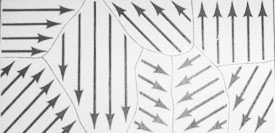 In unmagnetized materials the domains are
randomly aligned in different directions and cancel each other out.
In unmagnetized materials the domains are
randomly aligned in different directions and cancel each other out.
Material from
Unmagnetized Material
In a magnet all
the domains are oriented in the same direction.
In the case of
a nail, the domains can be aligned in the same direction causing the nail to
become magnetic.
When a
ferromagnetic material is placed in a strong magnetic field it causes all the
domains to line up and produce a strong magnetic field.
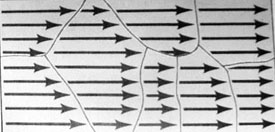 This explains
how a magnet can pick up a group of iron paper clips. The magnet aligns all the
domains in the paper clip creating tiny magnets within the paper clip. When the
magnet is removed the domains return to their random state.
This explains
how a magnet can pick up a group of iron paper clips. The magnet aligns all the
domains in the paper clip creating tiny magnets within the paper clip. When the
magnet is removed the domains return to their random state.
Material from
Magnetized Material
Even a strong
magnet can be demagnetized if the domains are disrupted by force or heat.

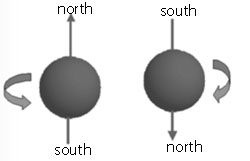
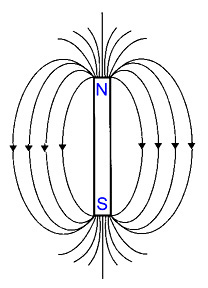
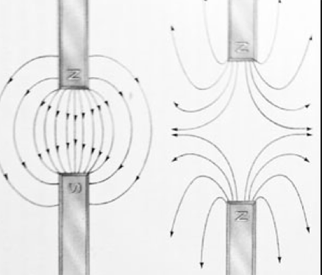
No comments:
Post a Comment